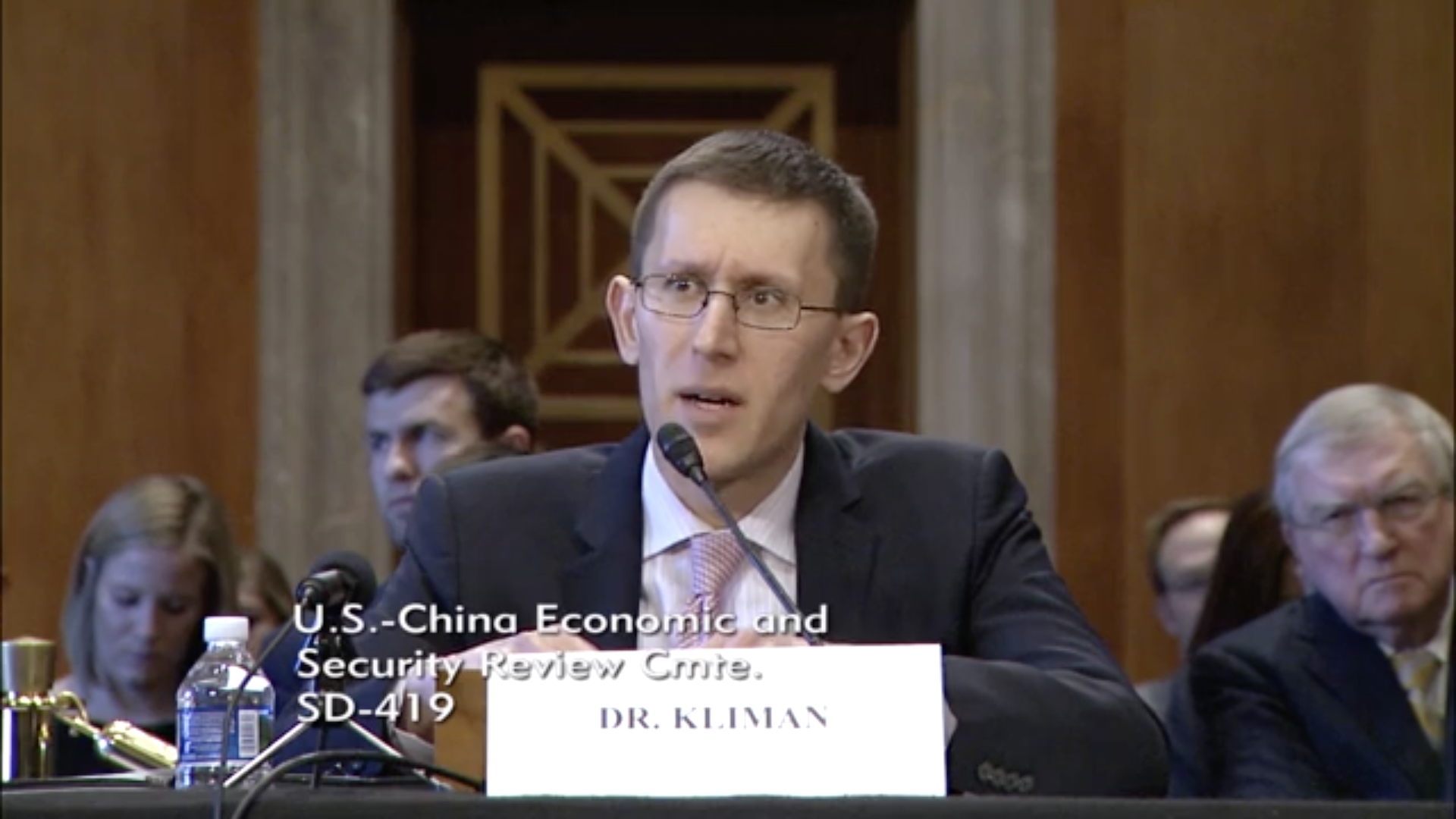
January 25, 2018
Testimony before the U.S.-China Economic and Security Review Commission
The Geostrategic and Military Drivers and Implications of BRI
Commissioner Shea, Commissioner Tobin, thank you for the opportunity to testify before this distinguished commission on “The Geostrategic and Military Drivers and Implications of BRI.”
I commend this commission for convening a daylong hearing on different aspects of China’s Belt and Road Initiative, or BRI. My testimony will focus on the geostrategic and military drivers and implications of BRI, while also touching on the larger elements of an American strategy intended to shape BRI to align with international rules and norms, cooperate selectively with China, and compete smartly where required.
What is BRI, and Why Does It Matter
China is making a trillion-dollar play to shape the economic and geopolitical future of the Indian Ocean rim and Eurasia. Unveiled by Chinese President Xi Jinping in the fall of 2013, what has since become known as the Belt and Road Initiative (though still sometimes referred to as “One Belt, One Road”) is a long-term effort by Beijing to link together parts of Asia, the Middle East, Africa, and Europe through building ports, rails, roads, pipelines, and telecommunications networks, and other types of infrastructure.
Geographically, BRI covers countries representing 65 percent of the world’s population and one-third of its economic output. China plans to spend a trillion dollars in support of the initiative, which at present encompasses two major parts: a “21st Century Maritime Silk Road” stretching from Southeast Asia across the Indian Ocean into the Mediterranean Sea; and, a “Silk Road Economic Belt” extending across Eurasia with branches terminating in Pakistan, Europe, and potentially additional locations. 3 A “Digital New Silk Road” that overlays both the maritime and land corridors with communications technology infrastructure may eventually become a third major part of BRI. The primary drivers behind BRI ultimately relate to China’s domestic economy: the need to relieve surplus industrial capacity, the imperative to promote economic growth in China’s underdeveloped regions through greater international connectivity, and the ambition to transform state-owned enterprises into globally competitive companies. Yet BRI also reflects several geostrategic and military considerations. First and foremost is President Xi Jinping’s vision of national rejuvenation –a China predominant in Asia and the leading power globally by 2049. Longstanding concerns about China’s energy dependence on vulnerable sea lines of communication as well as a desire to stand up new China-centric international organizations also motivate BRI.
Despite some recent high-profile setbacks to several BRI projects, China at present retains the initiative. And the United States should neither underestimate China’s ability to implement the vision articulated for BRI nor downplay the appeal of BRI to countries in dire need of investment in physical and digital infrastructure. In late 2013, a lack of imagination prevented the United States from anticipating the scope and consequences of Beijing’s land reclamation in the South China Sea, delaying a timely and vigorous response. By comparison, BRI is unfolding over a far larger land and maritime expanse, and could have more sweeping consequences for the United States.
The full testimony is available to download and can be watched here.
Download the testimony.
More from CNAS
-
Leverage the new US International Development Finance Corporation to compete with China
Commentary
The United States has a unique opportunity to up its game in the global economic competition with China. In early October, even as Democrats and Republicans in the Senate enga...
By Daniel Kliman
-
On GPS: The future of US-China relations
Video
Former Assistant Secretary of State for East Asian and Pacific Affairs Kurt Campbell breaks down the factions and relationships shaping US-China relations. View the full vide...
By Kurt Campbell
-
What is the end game with China?
Commentary
As President Trump prepares to meet with Chinese President Xi Jinping later this month, there is intense speculation about whether the two leaders will strike a deal over the ...
By Peter Harrell
-
The United States' Greatest Strength Over Russia and China is Its Alliance with Europe
Commentary
President Donald Trump has rightly recognized that America must do more to stand up to Chinese and Russian threats to U.S. interests. While most agree that having a national s...
By Andrea Kendall-Taylor & Julianne Smith



